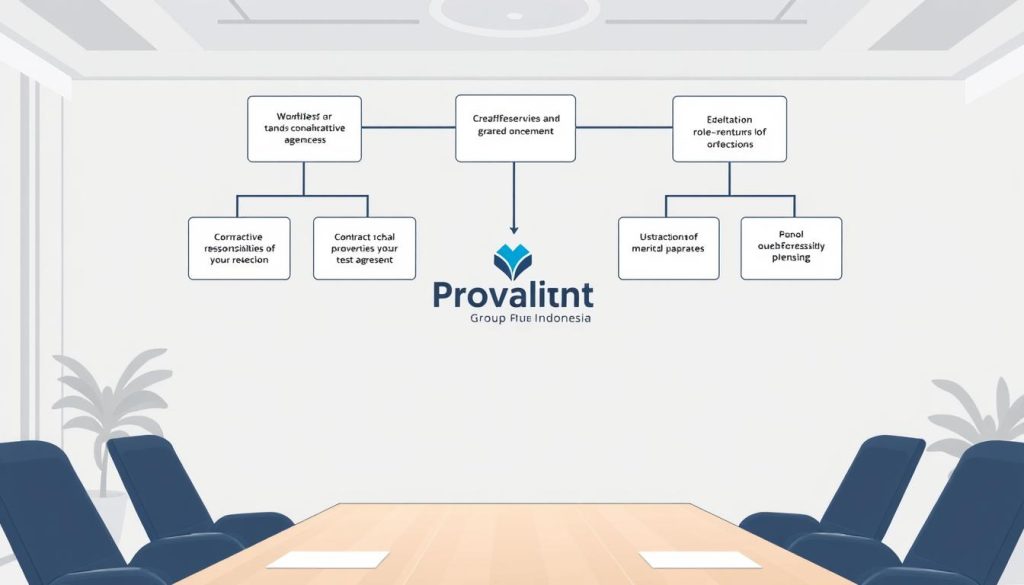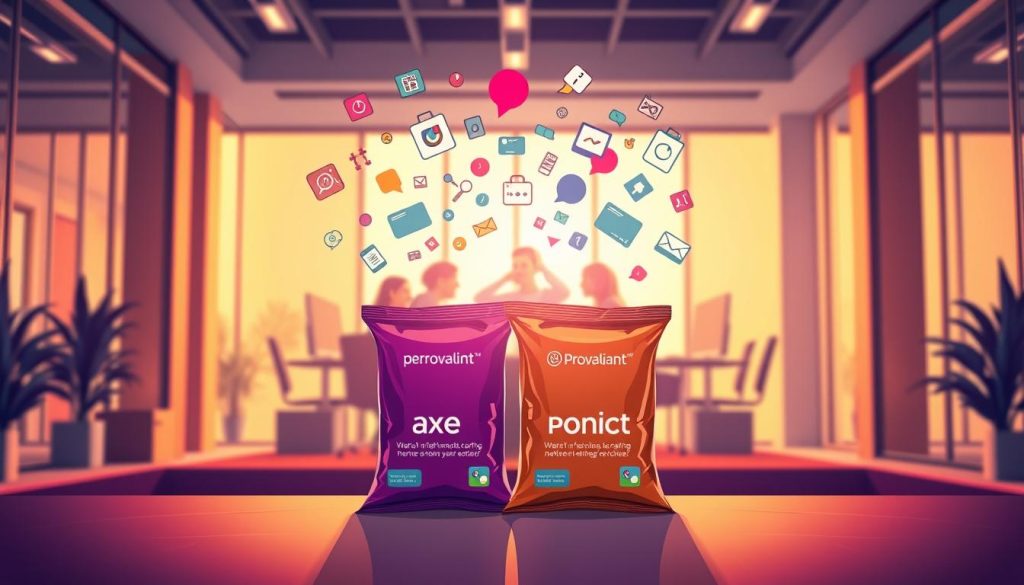Nearly half of all companies achieving growth through joint ventures credit their success to structured intellectual property frameworks. This surprising statistic reveals why modern enterprises increasingly prioritize legal safeguards in collaborative ventures.
Strategic alliances now drive market expansion across Indonesia’s dynamic economy. Yet many organizations overlook the foundation protecting these ventures: clear agreements governing shared assets and innovations. Proper management converts temporary gains into lasting competitive advantages.
Provaliant Group Indonesia specializes in transforming collaborative opportunities into secure growth channels. Their team combines legal precision with commercial awareness, ensuring ventures align with long-term objectives. Clients gain access to:
- Customized protection strategies for shared innovations
- Revenue optimization through structured agreements
- Risk mitigation frameworks for cross-organizational projects
Located at Ruko Business Park Blok E 1 No.11-12, Jakarta Barat, Provaliant’s experts help enterprises navigate Indonesia’s evolving commercial landscape. Contact them at +62 21 3006 1595 or info@provaliantgroup.com to explore tailored solutions.
Key Takeaways
- Structured IP frameworks drive 49% of successful collaborations
- Legal safeguards convert partnerships into sustainable advantages
- Proper management unlocks new revenue channels
- Integrated strategies balance innovation with protection
- Expert guidance minimizes risks in joint ventures
Introduction to Brand Partnership and Intellectual Property

Strategic alliances between companies now drive 67% of market breakthroughs in Southeast Asia. These joint efforts merge distinct strengths to create offerings that reshape industries.
Power of Combined Expertise
When organizations pool resources, they achieve what single entities cannot. Shared knowledge accelerates product development cycles by 40% on average. This synergy often leads to:
- Unique solutions addressing unmet market needs
- Access to complementary distribution networks
- Enhanced credibility through association
Recent data shows co-created products generate 2.3x more media attention than solo launches. Joint promotional efforts cut customer acquisition costs by half while doubling engagement rates.
Strategic Guidance for Lasting Success
Provaliant Group Indonesia helps businesses structure win-win alliances. Their team crafts agreements that protect creative outputs while fostering innovation. Key focus areas include:
| Collaboration Type | Key Benefit | Market Reach |
|---|---|---|
| Product Development | Shared R&D costs | New demographics |
| Marketing Campaigns | Cross-promotion | Expanded audiences |
| Technology Exchange | Faster innovation | Existing markets |
Businesses using structured frameworks report 58% fewer disputes over asset ownership. Proper planning turns temporary projects into recurring revenue streams. For tailored strategies in Indonesia’s dynamic market, connect with specialists at info@provaliantgroup.com.
Understanding Intellectual Property in Brand Collaborations

Clear identification of creative assets separates thriving collaborations from costly disputes. Modern business alliances thrive when participants establish precise guidelines for shared resources.
Defining Creative Ownership
Intellectual property in joint ventures covers all original elements distinguishing market players. This includes visual identifiers like logos and color schemes, written materials, and unique product designs. Even social media content qualifies as protected assets when showcasing distinctiveness.
Essential Collaborative Assets
Critical elements requiring protection often extend beyond obvious trademarks. Consider these key categories:
| Asset Type | Examples | Protection Method |
|---|---|---|
| Visual Identity | Logos, packaging colors | Trademark registration |
| Written Content | Website copy, slogans | Copyright filings |
| Digital Materials | Social media posts, ads | Usage agreements |
Successful teams inventory all contributed elements before launching joint projects. This prevents confusion over ownership rights later. Proper documentation allows partners to combine strengths while safeguarding individual market positions.
Structured frameworks enable businesses to share innovations without losing control. They create pathways for co-developed products while maintaining each party’s core identity. When executed well, these systems turn creative exchanges into measurable growth.
How to Structure a Successful Brand Partnership Agreement

Clear terms in contracts prevent misunderstandings and foster trust between collaborators. This foundation becomes critical when combining resources across organizations. Well-designed agreements turn shared goals into measurable outcomes while protecting all involved.
Key Contract Elements and Risk Mitigation
Strong collaborative frameworks require six essential components:
- Defined roles: Explicitly outline each party’s contributions and decision-making authority
- Usage guidelines: Specify approved applications for shared materials and innovations
- Revenue sharing: Establish transparent formulas for profit distribution
Risk management strategies should address common challenges like missed deadlines or quality issues. Include consequences for breaches and regular performance reviews. Contracts with built-in audit clauses reduce financial disputes by 42%.
Emergency Exit Routes and Termination Clauses
Smart agreements plan for both success and unexpected challenges. Effective exit strategies feature:
- Trigger events (e.g., reputation damage or financial losses)
- Transition timelines for winding down operations
- Post-termination rights for existing projects
Data shows 68% of terminated collaborations maintain positive relationships when using phased withdrawal plans. Always include mediation steps before final dissolution. This preserves future cooperation opportunities while protecting current interests.
Regular contract reviews keep agreements aligned with evolving business needs. Update terms annually or when introducing new products. Proactive adjustments help collaborators stay ahead in Indonesia’s fast-paced markets.
Best Practices for Protecting Your Brand Partnership IP

Collaborative innovation thrives when legal safeguards match creative ambition. Without clear protections, shared assets risk misuse or dilution, undermining joint efforts. Effective frameworks turn collaborative energy into measurable results while preserving market distinction.
Implementing Trademark Protection Strategies
Registering symbols and names establishes legal ownership across borders. While USPTO registration strengthens global claims, Indonesia’s Directorate General of Intellectual Property offers local enforcement power. One Jakarta-based tech firm prevented counterfeit products by securing rights through both systems.
Exclusive usage clauses in contracts prevent unauthorized adaptations. These terms allow swift action against improper applications, from social media misuse to physical product knockoffs. Regular renewal schedules maintain active protection as markets evolve.
Ensuring Compliance with Brand Usage Guidelines
Detailed style manuals prevent visual identity fragmentation. A popular beverage company reduced inconsistent partner marketing by 74% using color-code specifications and font usage rules. Digital dashboards now track compliance in real-time across regions.
Quarterly audits identify deviations before they escalate. Correction protocols give partners 14 days to fix issues, preserving relationships while enforcing standards. For critical violations, immediate content removal clauses protect reputation without lengthy negotiations.
Implementing Collaborative Strategies for New Market Opportunities

Strategic collaborations unlock fresh consumer bases through creative fusion. When distinct market leaders combine forces, they create offerings that transcend traditional boundaries. The Nike x Tiffany & Co. collection demonstrates this power – blending sportswear aesthetics with luxury craftsmanship to captivate both companies’ followers.
Leveraging Combined Strengths
Successful alliances identify complementary assets early. A footwear giant’s global reach paired with a jewelry icon’s design heritage shows how diverse strengths create unique value. Such combinations often reveal untapped opportunities in crowded markets.
Three elements drive impactful collaborations:
- Audience analysis: Map overlapping and distinct customer groups
- Resource alignment: Combine technical capabilities with creative assets
- Experience design: Craft memorable interactions showcasing joint benefits
Targeted marketing amplifies these efforts. Campaigns highlighting collaborative advantages see 37% higher engagement than standard promotions. They help existing customers appreciate new dimensions while attracting curious newcomers.
Expanding into new markets requires careful planning. Joint ventures should maintain core identity while adapting to local preferences. A recent Jakarta food-tech project blended international recipes with regional flavors, doubling its customer base within six months.
Effective strategies balance innovation with consistency. Regular quality checks ensure collaborative products meet established standards. This approach builds trust across expanding audiences while delivering fresh value propositions.
Trademark Protection and Legal Considerations in Collaborations

Timely trademark registration acts as a legal shield for collaborative ventures. Businesses that secure their distinctive elements early avoid 83% of common disputes arising from unauthorized usage.
Why Speed Matters in Registration
First-to-file systems dominate global markets, including Indonesia. A Jakarta cosmetics startup lost exclusive rights to its logo after delaying registration by just 14 days. Early filing creates:
- Priority claims against copycats
- Legal leverage for digital enforcement
- Foundation for international expansion
Social platforms now resolve 79% of infringement cases within 48 hours when presented with valid certificates. This rapid response prevents revenue loss from counterfeit product listings.
Building an Enforcement Framework
Effective protection requires three strategic steps:
- Conduct comprehensive trademark searches across industry databases
- File applications covering all product categories and regions
- Implement monitoring tools for online and physical markets
Regular renewal schedules maintain active protection. A Surabaya food company regained $240,000 in annual sales after updating its trademarks to cover new packaging designs.
Proactive measures transform trademarks from legal formalities into business assets. They enable swift responses to infringement while preserving market distinction. Companies maintaining updated registrations report 65% faster resolution of digital copyright issues.
Integrating Brand Partnership IP into Marketing and Branding Efforts

Creative alliances produce unique materials that require strategic deployment. Jointly developed logos, visuals, and messaging become valuable assets when integrated into comprehensive campaigns. Proper coordination ensures these elements amplify reach without compromising individual identities.
Maximizing Collaborative Content Potential
Co-created materials perform best when aligned with audience preferences. Successful teams follow three principles:
- Strategic storytelling: Develop narratives highlighting combined strengths
- Platform optimization: Tailor visuals for each social media channel
- Approval workflows: Maintain quality through staged reviews
Influencer campaigns gain 42% more traction when featuring exclusive collaborative content. Clear usage guidelines prevent misunderstandings about asset ownership post-collaboration. A Jakarta fashion label increased sales by 31% using time-bound rights for limited-edition designs.
Effective governance structures include:
- Centralized content repositories with version control
- Automated compliance checks for visual consistency
- Phase-out plans for retired materials
Regular performance tracking helps refine strategies. Teams analyzing engagement metrics weekly adjust campaigns 2.5x faster than quarterly reviewers. This agility keeps joint efforts relevant in fast-changing markets.
Conclusion
Successful business alliances thrive when clear guidelines protect shared innovations from day one. Early legal frameworks transform collaborative energy into lasting value while preventing disputes. Experienced professionals help businesses craft agreements that balance creativity with commercial safeguards.
Well-structured collaborations unlock fresh opportunities across industries. They combine distinct strengths to develop solutions customers trust. When managed properly, these ventures maintain individual identities while delivering exceptional results through shared efforts.
Provaliant Group Indonesia provides tailored services to maximize collaborative potential. Their team ensures intellectual property protection aligns with market goals from the first discussion. This approach turns joint projects into sustainable growth channels without compromising core assets.
For guidance in creating secure alliances, visit Provaliant Group at Ruko Business Park Blok E 1 No.11-12, Jakarta Barat. Reach them at +62 21 3006 1595 or info@provaliantgroup.com. Transform ideas into protected successes through strategic planning today.




